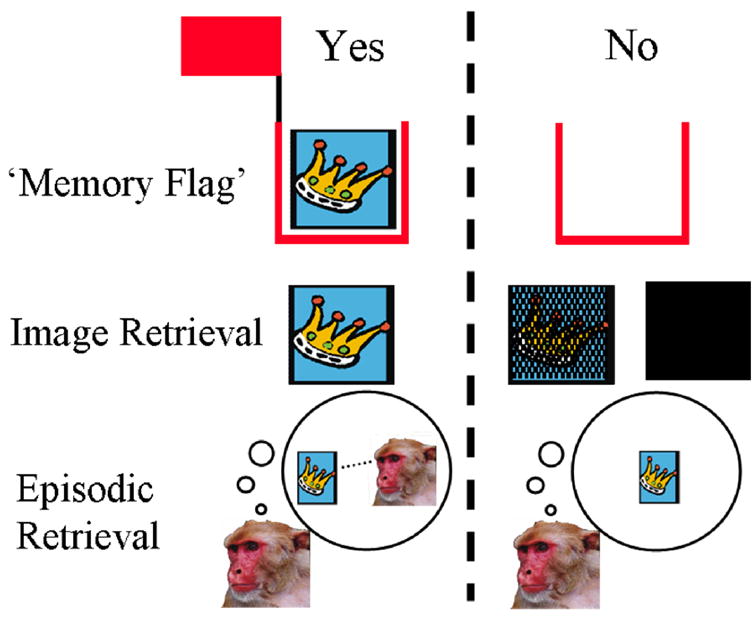Figure 1.

Cartoons of three candidate processes of introspective memory assessment. The column to the left of the dashed line represents the contents of cognitive processing on trials on which monkeys choose to take the memory test. The right column depicts the same on trials on which the test is declined. The memory flag hypothesis posits an indicator for the presence of memory. Monkeys use the metacognitive response contingent on the indicator, but are not aware of the content of the memory. In the case of the image retrieval model, the decision to take the memory test is based on the vividness of the memory retrieved. The episodic retrieval hypothesis proposes that monkeys take the test when they can remember the context of the study episode and decline the test when this information cannot be recovered.
